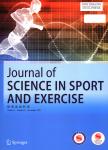Vitamin D Status of Elite Athletes in Singapore and Its Associations With Muscle Function and Bone Health
作者机构:Sport Science and Sport MedicineSingapore Sport InstituteSport SingaporeSingaporeSingapore Physical Education and Sports ScienceNational Institute of EducationNanyang Technological UniversitySingaporeSingapore School of SportsHealth and LeisureRepublic PolytechnicSingaporeSingapore Performance NutritionHigh Performance Sport New ZealandAucklandNew Zealand
出 版 物:《Journal of Science in Sport and Exercise》 (体育运动科学(英文))
年 卷 期:2021年第3卷第4期
页 面:385-393页
学科分类:0403[教育学-体育学] 040302[教育学-运动人体科学(可授教育学、理学、医学学位)] 04[教育学]
主 题:Vitamin D Athletes Sports Asia Muscle function
摘 要:Purpose The primary aim of this study is to determine the prevalence of vitamin D deficiency and insufficiency among Asian athletes participating in indoor and outdoor sports in equatorial *** aims are to examine the relationship between vitamin D status and skeletal muscle strength and performance,and bone *** Serum 25(OH)D concentrations were determined in 95 indoor and outdoor athletes across various *** muscle strength and performance were assessed using the isometric mid-thigh pull(IMTP),drop jump test and 30 m sprint *** Mineral Density(BMD)was measured using Dual-energy X-ray Absorptiometry(DXA).Results Mean serum 25(OH)D concentrations were 28.6±8.9 ng/mL among indoor,and 39.2±13.2 ng/mL among outdoor sport athletes respectively(P0.05).More indoor sport athletes(62%)had insufficient vitamin D compared to outdoor sport athletes(30%)(P0.05).Outdoor sport athletes exhibited significantly greater peak force generation than indoor sport athletes(2079±470 N vs.1869±546 N,P=0.027).Other markers of muscle function were not significantly different between *** and outdoor sport athletes did not have significantly different BMDs although none of the athletes studied presented with poor *** who were deficient in vitamin D had significantly lower BMD compared to athletes with sufficient vitamin D(P=0.01).Conclusion Forty-seven percent of Singaporean athletes studied had suboptimal vitamin D *** monitoring of vitamin D levels among indoor sport athletes should be in place to ensure optimal health and performance.



